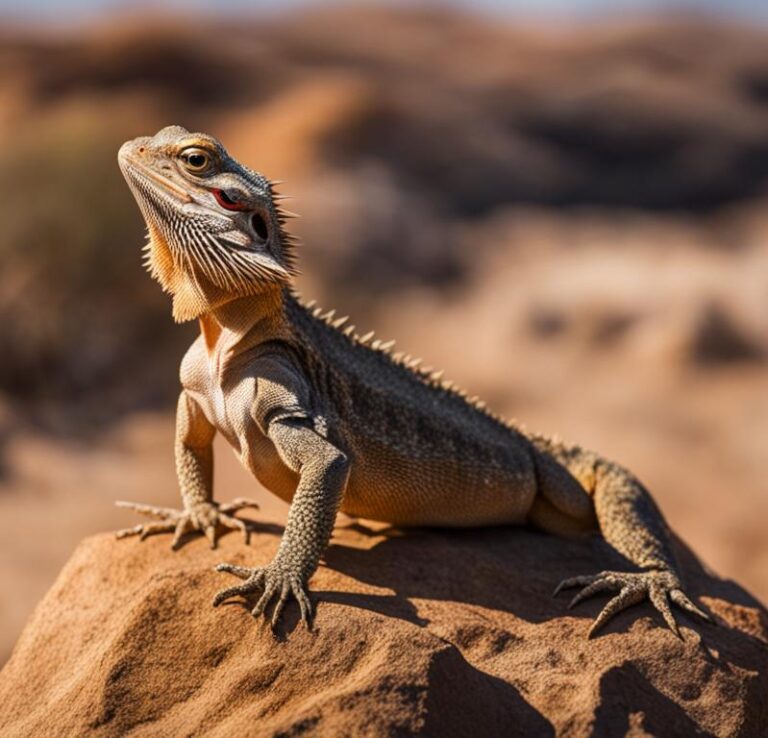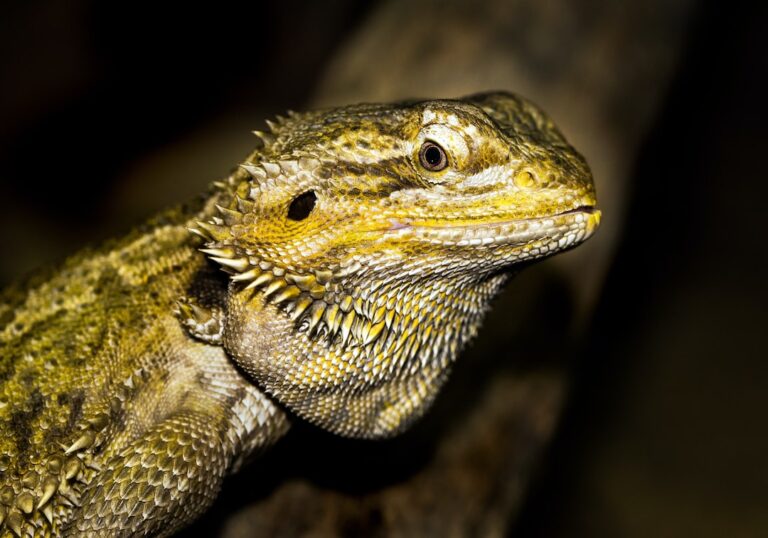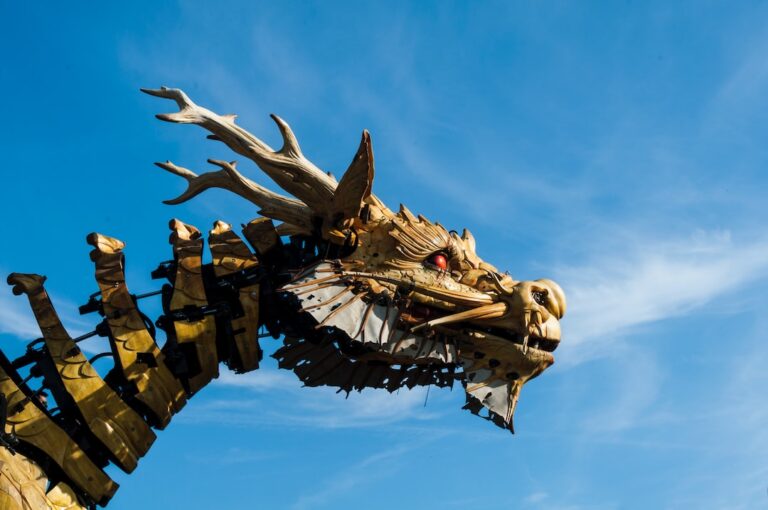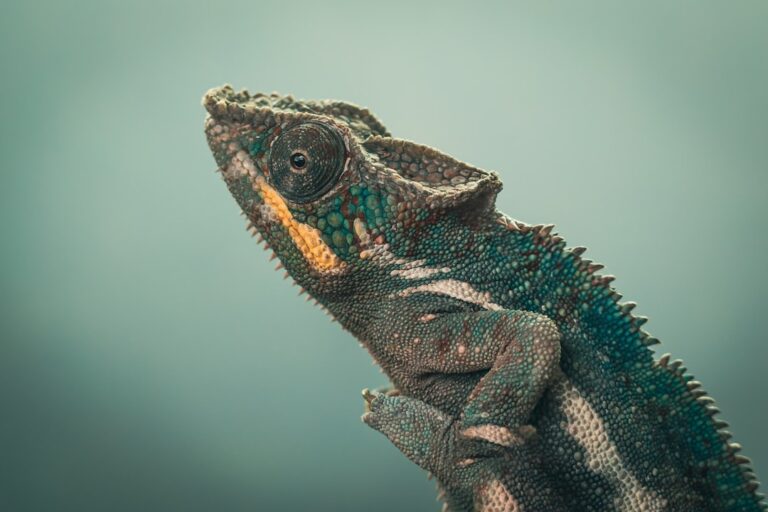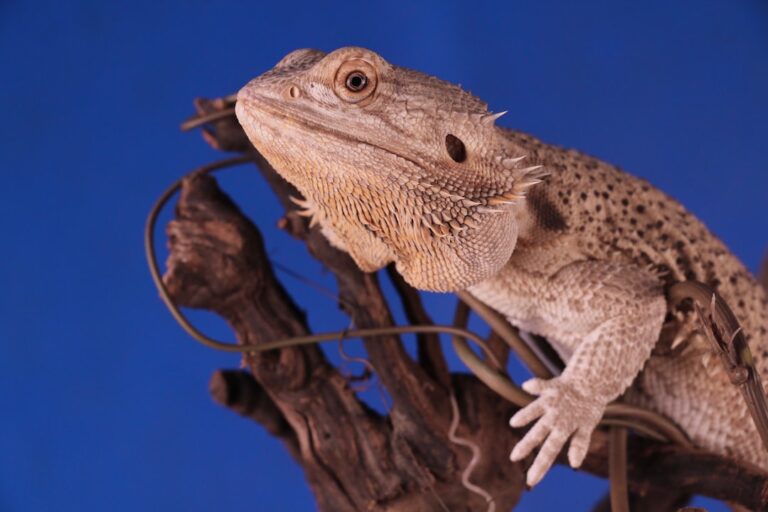Are Bearded Dragons Protective of Their Owners?
Bearded dragons are fascinating reptiles that have become popular pets in recent years. These unique creatures are known for their distinctive appearance, with spiky scales and a beard-like flap of skin under their chin. But beyond their physical characteristics, it is important for owners to understand the behavior of bearded dragons. By understanding their behavior, owners can better care for and bond with their pets. In this article, we will explore the behavior of bearded dragons, including whether or not they show protective behavior towards their owners.
Table of Contents
Understanding Bearded Dragon Behavior
To understand the behavior of bearded dragons, it is important to first understand their natural behavior in the wild. Bearded dragons are native to Australia and are found in arid regions. In the wild, they are solitary creatures that spend much of their time basking in the sun and hunting for food. They are known for their calm and docile nature, which has made them popular pets.
Common behaviors exhibited by bearded dragons include basking, eating, and exploring their environment. They are diurnal animals, meaning they are most active during the day. Bearded dragons also have a unique way of communicating through body language. For example, when they feel threatened or stressed, they may puff out their beard and flatten their body to appear larger. They may also bob their head up and down as a sign of dominance or submission.
There are several factors that can affect the behavior of bearded dragons. These include temperature, lighting, diet, and socialization. Bearded dragons require specific temperature and lighting conditions to thrive, so it is important for owners to provide them with a suitable habitat. Diet also plays a role in their behavior, as a balanced diet is essential for their overall health and well-being. Lastly, socialization is important for bearded dragons to develop a bond with their owners and feel comfortable in their environment.
The Bond Between Bearded Dragons and Their Owners
Bearded dragons are known for their ability to bond with their owners. While they may not show the same level of affection as a dog or cat, they can form a strong bond with their human caregivers. This bond is built through regular interaction and positive reinforcement.
One of the ways that bearded dragons bond with their owners is through physical contact. They enjoy being held and stroked, and this can help them feel secure and comfortable. Regular handling can also help them become accustomed to human touch and reduce stress.
Another way that bearded dragons bond with their owners is through feeding. By hand-feeding them, owners can establish a positive association between themselves and food. This can help build trust and strengthen the bond between the owner and the bearded dragon.
Having a strong bond with your bearded dragon can have several benefits. It can make handling and care easier, as a bonded bearded dragon is more likely to be cooperative during grooming, feeding, and veterinary visits. It can also make the overall experience of owning a bearded dragon more enjoyable, as you will have a deeper connection with your pet.
Do Bearded Dragons Show Protective Behavior?
Protective behavior is often associated with mammals, such as dogs or cats, but do bearded dragons show protective behavior towards their owners? While they may not exhibit the same level of protective behavior as a dog, there are instances where bearded dragons have been known to display protective behavior towards their owners.
Protective behavior in bearded dragons can be seen when they perceive a threat or danger to themselves or their owner. This can include puffing out their beard, hissing, or even biting if they feel threatened. While these behaviors may not seem protective in the traditional sense, they are a way for the bearded dragon to defend itself and its territory.
It is important to note that not all bearded dragons will display protective behavior. Each individual bearded dragon has its own unique personality and temperament, and some may be more protective than others. Additionally, the level of protective behavior can also be influenced by factors such as socialization and training.
Signs of Protective Behavior in Bearded Dragons
While bearded dragons may not show protective behavior in the same way that a dog or cat would, there are still signs that can indicate they are being protective. These signs can be both physical and behavioral.
Physically, a bearded dragon may puff out its beard, flatten its body, or open its mouth wide to display its teeth. These are all signs that the bearded dragon is trying to appear larger and more intimidating to a perceived threat.
Behaviorally, a bearded dragon may exhibit aggression towards a perceived threat. This can include hissing, lunging, or even biting. They may also try to position themselves between their owner and the perceived threat, as a way of protecting their owner.
It is important to note that these behaviors should not be encouraged or reinforced. While it may seem cute or endearing to have a protective bearded dragon, it is important to remember that they are still wild animals and should be treated with respect.
How Bearded Dragons Protect Their Owners
While bearded dragons may not have the same physical capabilities as a dog or cat, they can still protect their owners in their own unique ways. One way that bearded dragons can protect their owners is through their natural abilities.
Bearded dragons have excellent eyesight and can detect movement from a distance. This means that they can alert their owners to potential threats or dangers in their environment. They may also use their body language to communicate that they sense something is wrong.
Another way that bearded dragons can protect their owners is through their ability to deter potential threats. The sight of a large, spiky lizard with a puffed-out beard can be enough to scare off predators or intruders. While they may not physically attack, their presence alone can be enough to ward off potential threats.
The Importance of Socialization for Bearded Dragons
Socialization is an important aspect of owning a bearded dragon. By socializing them from a young age, owners can help them develop a bond with their human caregivers and become comfortable in their environment. Socialization can also play a role in their behavior and protective instincts.
Socializing a bearded dragon involves exposing them to different people, animals, and environments. This can help them become accustomed to new experiences and reduce fear or anxiety. It can also help them develop trust and confidence, which can in turn affect their behavior and protective instincts.
Bearded dragons that are well-socialized are more likely to feel secure in their environment and less likely to display aggressive or defensive behaviors. They are also more likely to form a strong bond with their owners, which can further enhance their protective instincts.
Training Bearded Dragons to Be Protective
While bearded dragons may not be able to be trained in the same way as dogs or cats, there are still ways to encourage protective behavior in them. The key is to focus on positive reinforcement and reward-based training.
One way to encourage protective behavior is to reward your bearded dragon for displaying signs of protection. For example, if your bearded dragon puffs out its beard when it senses a threat, you can reward it with a treat or praise. This will help reinforce the behavior and encourage it to continue.
It is important to note that training a bearded dragon to be protective should not involve encouraging aggressive or dangerous behaviors. Instead, the focus should be on encouraging the natural protective instincts of the bearded dragon in a safe and controlled manner.
Factors That Can Affect Bearded Dragon Protective Behavior
There are several factors that can affect the protective behavior of bearded dragons. One of the main factors is their environment. Bearded dragons that are kept in a stressful or unsafe environment may be more likely to display defensive or aggressive behaviors. It is important to provide them with a suitable habitat that meets their physical and psychological needs.
Another factor that can affect bearded dragon protective behavior is their health. Bearded dragons that are sick or in pain may be more likely to display defensive or aggressive behaviors. It is important to regularly monitor their health and seek veterinary care if any issues arise.
Lastly, socialization can also play a role in bearded dragon protective behavior. Bearded dragons that are well-socialized and have a strong bond with their owners may be more likely to display protective behaviors. This is because they feel secure and comfortable in their environment and trust their owners to keep them safe.
Tips for Building Trust with Your Bearded Dragon
Building trust with your bearded dragon is an important part of developing a strong bond and encouraging protective behavior. Here are some tips for building trust with your bearded dragon:
1. Handle your bearded dragon regularly: Regular handling can help your bearded dragon become accustomed to human touch and reduce stress. Start by gently stroking their back and gradually increase the amount of time you spend handling them.
2. Hand-feed your bearded dragon: By hand-feeding your bearded dragon, you can establish a positive association between yourself and food. This can help build trust and strengthen the bond between you and your pet.
3. Create a safe and comfortable environment: Providing your bearded dragon with a suitable habitat that meets their physical and psychological needs is essential for building trust. Make sure they have access to proper lighting, temperature, and hiding spots.
4. Be patient and consistent: Building trust takes time, so it is important to be patient and consistent in your interactions with your bearded dragon. Avoid sudden movements or loud noises that may startle them, and always handle them gently and with care.
Are Bearded Dragons Protective of Their Owners?
In conclusion, while bearded dragons may not display protective behavior in the same way as dogs or cats, there are instances where they have been known to show signs of protection towards their owners. Bearded dragons can form a strong bond with their owners through regular interaction and positive reinforcement. This bond can lead to a sense of protection and security for both the bearded dragon and its owner.
It is important for owners to understand the natural behavior of bearded dragons and provide them with a suitable environment and socialization opportunities. By doing so, owners can help their bearded dragons feel secure and comfortable in their environment, which can in turn affect their behavior and protective instincts.
While it is not recommended to encourage aggressive or dangerous behaviors in bearded dragons, it is possible to train them to display protective behaviors in a safe and controlled manner. The key is to focus on positive reinforcement and reward-based training.
Overall, bearded dragons are fascinating creatures that can form a strong bond with their owners. While they may not show protective behavior in the same way as other pets, they can still provide a sense of protection and security through their natural abilities and instincts.
If you’re interested in learning more about the behavior of reptiles, you might also enjoy reading the article “Are Chameleons Quiet?” on Reptile Friend. This article explores whether chameleons are known for being silent creatures or if they make any sounds. Discover fascinating insights into the vocalizations (or lack thereof) of these unique reptiles. Read more


